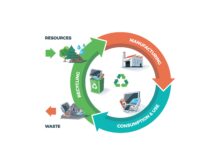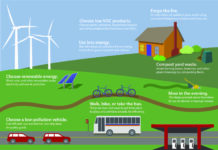The practice of agriculture has been an intrinsic part of human civilization for millennia. Its significance can be traced back to the provision of food, fiber, and other resources required for human survival. Nonetheless, the current modern agricultural practices have had a colossal impact on the environment, causing degradation of soil, water pollution, greenhouse gas emissions, and other environmental issues. As the world population continues to expand, and the challenges of climate change and resource depletion persist, it is now crucial to adopt sustainable agricultural practices that can help produce food in an environmentally-friendly and socially responsible way. This article will delve into the latest innovations in sustainable agriculture, examining how they are transforming the way we produce food.
What is Sustainable Agriculture?
Sustainable agriculture is a farming system that aims to meet the needs of the present while preserving the capacity of future generations to meet their own needs. This approach involves using environmentally sound, socially responsible, and economically viable farming practices. The fundamental aim of sustainable agriculture is to reduce the negative impacts of agriculture on the environment while promoting the health and well-being of farmers, their communities, and consumers.
Innovations in Sustainable Agriculture
-
Precision Agriculture
Precision agriculture is a sophisticated farming methodology that employs technology to optimize crop yields while simultaneously reducing the environmental impact of farming. This technique uses sensors, GPS mapping, and other advanced technologies to monitor crop growth and soil conditions, providing farmers with precise information for making informed decisions about planting, fertilization, and irrigation. By adopting precision agriculture, it is possible to reduce the use of water, fertilizer, and pesticides, while enhancing crop yields and lowering costs.
-
Regenerative Agriculture
Regenerative agriculture is a farming system that seeks to improve soil health and biodiversity while also decreasing greenhouse gas emissions. The approach involves utilizing practices such as cover cropping, crop rotation, and reduced tillage, which help to build healthy soils capable of storing carbon, retaining water, and supporting diverse ecosystems. By employing regenerative agriculture, it is possible to minimize the environmental impact of farming while enhancing soil fertility and boosting resilience to climate change.
-
Vertical Farming
Vertical farming is an innovative agricultural method that involves cultivating crops in vertically-stacked layers using artificial lighting and climate control systems. This approach allows for year-round crop production, irrespective of weather conditions, and can help reduce the use of water, fertilizer, and pesticides. Vertical farming has a smaller environmental footprint than traditional farming practices, as it requires less land and can be located in urban areas, thereby reducing transportation costs.
-
Aquaponics
Aquaponics is a sustainable farming system that combines aquaculture (fish farming) with hydroponics (growing plants in water). This approach involves utilizing fish waste to fertilize crops, which are grown in water rather than soil. This technique allows for efficient use of water and nutrients while reducing the use of pesticides and other chemicals. Aquaponics can also produce both fish and crops in the same system, making it a more sustainable and efficient method of food production.
-
Agroforestry
Agroforestry is a farming system that integrates trees with crops or livestock. This approach involves using diverse plant species to create a more resilient and sustainable agricultural system. Agroforestry can help reduce soil erosion, enhance soil fertility, and provide shade and wind breaks for crops and livestock. It can also help reduce greenhouse gas emissions, as trees can store carbon and provide habitat for wildlife.
-
Biodynamic Farming
Biodynamic farming is a holistic approach to agriculture that seeks to create a self-sustaining and self-regulating system. This technique involves the use of biodynamic preparations, which are made from natural materials such as compost and herbal teas, to promote soil health and fertility. Biodynamic farming also involves planting and harvesting crops according to the phases of the moon and other celestial events, which is believed to enhance vitality and quality.
-
Integrated Pest Management
Integrated pest management (IPM) is a sustainable approach to pest control that involves using a combination of techniques to manage pests, rather than relying on chemical pesticides. IPM techniques can include the use of beneficial insects, crop rotation, and cultural practices such as planting trap crops to lure pests away from cash crops. This approach can help reduce the use of chemical pesticides, which can be harmful to the environment and human health.
-
Conservation Agriculture
Conservation agriculture is a farming system that aims to protect and enhance soil health while minimizing soil disturbance. This technique involves using techniques such as no-till farming, cover cropping, and crop rotation to improve soil structure and fertility. Conservation agriculture can help reduce erosion, improve water retention, and increase the efficiency of nutrient use. It can also help reduce greenhouse gas emissions, as healthy soils can store carbon.
-
Organic Farming
Organic farming is a farming system that prohibits the use of synthetic pesticides, fertilizers, and genetically modified organisms (GMOs). This approach involves using natural methods to control pests and promote soil health, such as crop rotation, composting, and the use of beneficial insects. Organic farming can help reduce the use of harmful chemicals in agriculture, while promoting biodiversity and soil health.
-
Carbon Farming
Carbon farming is a farming system that aims to sequester carbon in soils and plants, helping to mitigate climate change. This approach involves using practices such as agroforestry, conservation agriculture, and cover cropping to increase the amount of carbon stored in soils and vegetation. Carbon farming can also help improve soil health and increase the resilience of agricultural systems to climate change.
Conclusion
Sustainable agriculture is a critical aspect of ensuring the long-term viability of our food systems, as well as the health and well-being of our planet and its inhabitants. The innovations discussed in this article represent a range of approaches to sustainable agriculture, each with its own unique benefits and challenges. By embracing these innovations and continuing to explore new ideas, we can create a more resilient, sustainable, and equitable food system for all.
Google News | Telegram
















